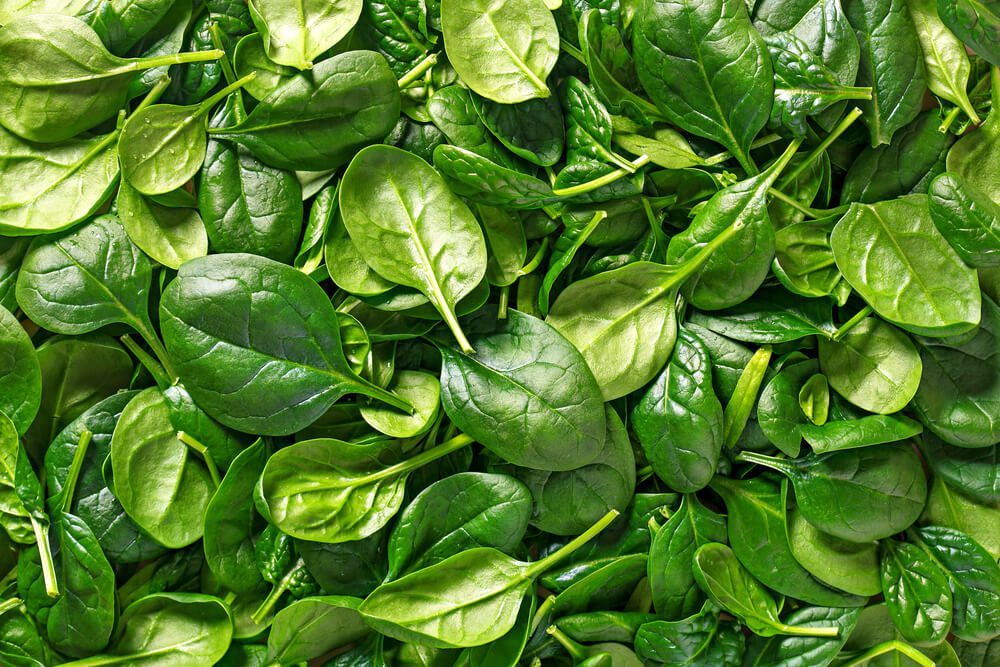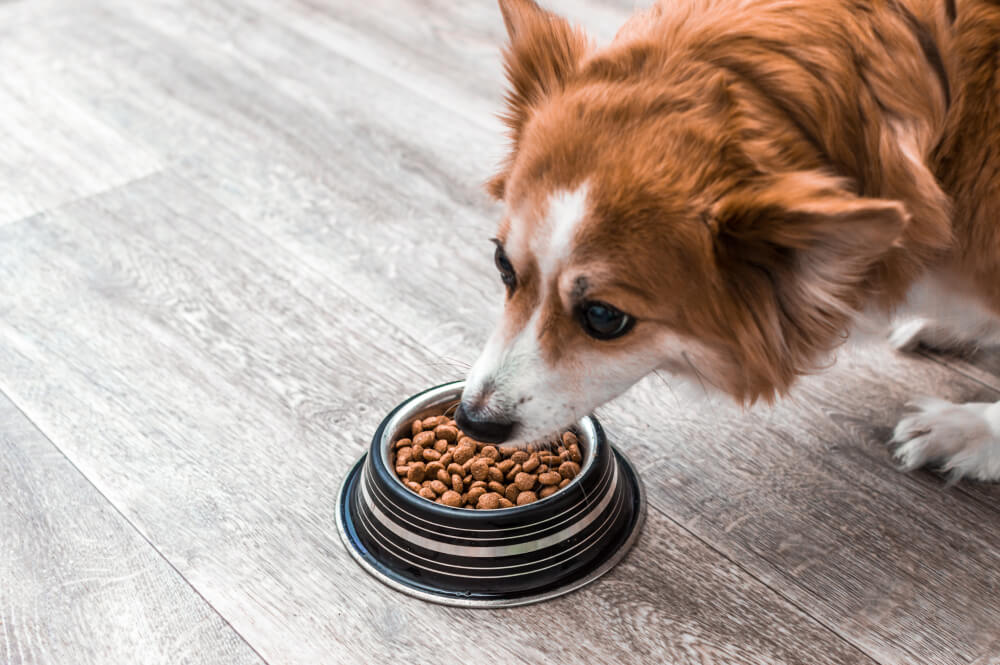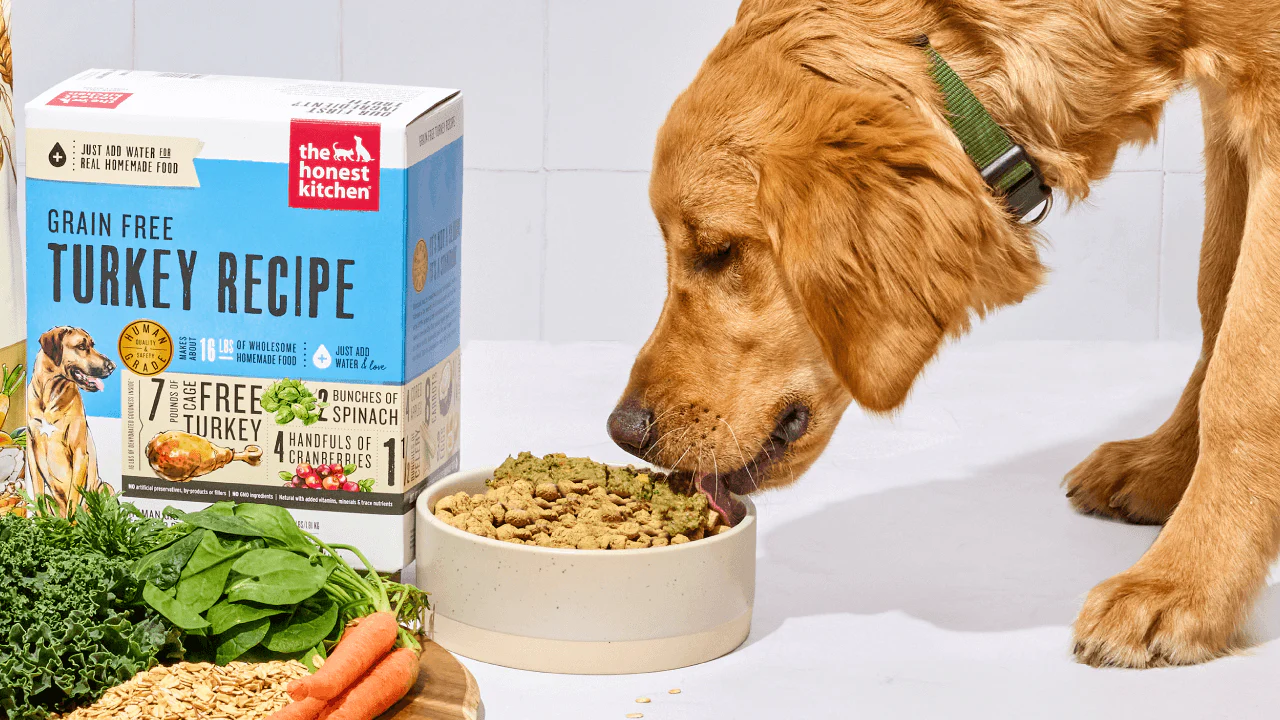Can Dogs Eat Spinach? Your Guide on this Superfood for Canines


Can Dogs Eat Spinach? Your Guide on this Superfood for Canines
Table of Contents
What you feed your dog is arguably one of the most important factors in determining how healthy they are. If you feed your dog high-quality nutritious food, they will grow to be a strong healthy one.
If not, your dog may suffer from constant health problems. Knowing this, you would think it should be easy to know what to give your dog. But it is not that simple. Every dog is different and for this reason, finding the best diet for yours may be trickier than expected.
One of the most controversial topics among dog parents is whether dogs should eat spinach. If you have tried to incorporate more vegetables in your dog’s diet, your research must have left you asking yourself if spinach is a good choice for your dog.
If this is you, read on to find out how safe spinach is for dogs, how much to give and how best to add it to your dog’s diet.
Can Dogs Eat Spinach?
The short answer is yes, dogs can eat spinach. However, it is not that simple. Spinach, while very nutritious and healthy, has potential negative health consequences if not used properly. On one hand, spinach, being a vegetable is rich in nutrients such as vitamins, minerals, antioxidants, and phytochemicals all of which provide tremendous health benefits.
On the other hand, spinach contains a class of chemicals known as oxalates or oxalic acid that have serious effects on the body if eaten in excess. Oxalates, once in the blood, can bind to calcium and magnesium reducing their availability to the body. This is a serious issue because calcium and magnesium play very important roles in the body.
The decision to give your dog spinach lies entirely in your hands. Your vet and other sources can only make recommendations but the ultimate choice is yours.
Spinach Nutrition
Like any vegetable, spinach is a very nutritious food. In 100g of spinach, you will find:
- 23 Calories
- 2.86 grams of protein
- 0.39 grams of fat
- 3.63 grams of carbohydrates
- 2.2 grams of dietary fiber
- 9380 IU Vitamin A
- 12200 of mcg Lutein + zeaxanthin
- 2.03 mg of Vitamin E
- 28.1 mg of Vitamin C
- 558 mg of Potassium
- 79 mg of Magnesium
Benefits of Spinach for Dogs
- Spinach is a source of iron that is essential for the health and formation of red blood cells. Iron is also key in oxygen and carbon dioxide transport to and from body tissues respectively.
- Spinach is a source of fiber. Fiber plays so many roles in the health of the body most notably that of the gut. Fiber is also important for the prevention of many chronic diseases like diabetes and heart disease.
- Spinach provides vitamin K, a key element in the process of blood clotting.
- Spinach also contains other vitamins and minerals like vitamin A or beta carotene which is essential for the immune system.
- Spinach is a good source of antioxidants. Antioxidants promote general body health by protecting body cells and tissues from damage caused by reactive oxygen species.
- Spinach contains phytochemicals that have protective properties against chronic diseases like diabetes and high blood pressure.
- Spinach is rich in B vitamins which are essential for metabolism and maintaining optimum energy levels
- Spinach supports heart health by providing nutrients that support heart health like potassium, fiber, and antioxidants.
How to Prepare Spinach for Your Dog
If you are planning to give spinach to your dog. Steaming is the recommended method of preparation. Steam the spinach for about 5 minutes and it is ready for eating. Boiling spinach causes loss of nutrients during cooking. This is because the water-soluble nutrients in spinach leech into the boiling water.
Unless you plan on using the cooking water, boiled spinach will have significantly less nutrients particularly B and C vitamins. Raw spinach is not advisable since it may cause digestive discomfort to the dog. This is because raw spinach is not as digestible as cooked spinach. If you give raw spinach especially in large amounts to your dog, it may fail to be properly digested in the gut and cause indigestion.
Indigestion will result in symptoms such as gas, diarrhea, bloating, and stomach pain. It is best to give spinach plain without any spices, salt, onions, garlic, or herbs. Some of these may be poisonous to your dog. Finally, chop your dog’s spinach before cooking it to further improve its digestibility in the gut. Chopping spinach also makes some of the nutrients like vitamin A more available for absorption in the small intestines.
How Much Spinach Should I Give My Dog?
The amount of spinach to give your dog is not set in stone. First, different dogs can tolerate different amounts of spinach. For example, bigger and older dogs can take more spinach than small dogs. Dogs with kidney damage also need to restrict their spinach intake.
For this reason, you need to carefully assess your unique situation before deciding on whether to give your dog spinach or what quantity you should give. For a healthy dog, spinach is best given in small amounts on some days. You should not be giving your dog spinach every day.
You can choose to give small amounts of spinach every other day. Or you can give moderate amounts of spinach once or twice a week. For small dogs and puppies, it is best to limit spinach to once a week to reduce the chances of health complications.
How to Give Your Dog Spinach
Similar to any other new dog food, spinach is best added to your dog’s diet gradually over time. If you introduce spinach to your dog in large amounts at once, she may not adapt well to it. Even worse, she may fall ill due to digestive discomfort.When introducing spinach to your dog’s diet, start by incorporating it into familiar foods where it can be disguised. Watch your dog’s reaction to the new treat and if it is positive, you can increase the amount next time. If your dog is tolerating the incorporated spinach, consider giving it on its own to see if she will tolerate it as well. Again, start with small manageable amounts and work your way up slowly.
Recipe Ideas for Incorporating Spinach Into Your Dog’s Diet
Spinach, Carrot, and Apple Treats
Ingredients
- 4 cups chickpea flour
- 1 teaspoon olive oil
- 2 eggs
- ½ cup baby carrots
- 1½ cups fresh spinach
- ½ apple
- ¼ cup water
Directions
- Preheat your oven to 350oF or 175oC
- Combine the flour, oil, and eggs in a medium-sized bowl
- In a food processor or strong blender, puree the apple, carrot, and spinach.
- Add the puree to the flour mixture to make a uniform dough
- Dollop about a tablespoon onto a baking pan until the dough is finished
- Bake in the oven for 15 minutes until the treats are browned.
Homemade Spinach and Bacon Dog Cookies
Ingredients
- 2 cups of oat flour
- 1 cup of rolled oats
- Bacon, as much as you or your dog would like
- Cheese
- 1 cup of spinach
- ½ cup of applesauce
Directions
- Preheat your oven to 325oF or 162oC
- Add the applesauce, water, spinach, bacon, and cheese to a bowl and mix
- Add the rolled oats and mix till combined
- Add the oat flour slowly until you get to the desired consistency
- Add more oat flour if the dough is too sticky
- Roll the dough and cut out shapes.
- Place the cookies on a baking sheet
- Bake for 12 to 15 minutes or until the cookies are brown and dry
Spinach and Tuna Scramble
Ingredients
- 1 can of Tuna
- ½ cup of Spinach
- 2 eggs
- 2 tablespoons of olive oil
Directions
- On medium heat, heat the olive oil in a non-stick
- Add the tuna and spinach and stir until cooked through
- Add the eggs and stir until the eggs are fully cooked
- Allow the food to cool completely before serving
What Are the Side Effects of Giving My Dog Too Much Spinach?
Spinach contains high amounts of a substance known as oxalic acid. In small amounts, the kidneys can get rid of it. However, when you or your dog take in too much like you would if you ate spinach every day, it stays in the blood and results in negative health issues.
- Decreased calcium absorption. The oxalic acid in spinach can react with the calcium in the gut to form calcium oxalate. Calcium oxalate is insoluble and cannot be absorbed into the bloodstream. Calcium is a very important element for body health aiding processes like bone and teeth formation.
- Increased risk of kidney stones. In the kidneys, oxalic acid can also combine with calcium to form calcium oxalate which accumulates to cause kidney stones and other kidney problems
Are There Any Other Vegetables My Dog Can Eat?
If your dog cannot have spinach or is simply not loving it, worry not. There is a variety of vegetables dogs can eat and get the same benefits. Each food has a unique nutrition composition therefore no vegetable can truly mimic that of spinach. However, there are vegetables that have a similar nutrition profile. Some of these vegetables include:
- Lettuce. Lettuce is a suitable replacement for spinach. It is however lower in nutrients but highly hydrating due to its high water content. Lettuce should ideally be given with other vegetables with higher nutritional value
- Kale. Kale has a very similar nutrition profile to spinach. Unfortunately, this similarity also means kale too has significant amounts of oxalic acid. Kale has lower amounts though and can be used in place of spinach.
- Collard greens. Collard greens are rich in vitamins and minerals making them excellent replacements for spinach. Their oxalate content is also not as concerning as that of spinach.
- Arugula. Another healthy dark leafy vegetable that has a nutrition profile very similar to that of spinach without the downsides.
- Green beans. These are very nutritious and packed with vitamin C, vitamin K, and manganese. They are also special because they contain more protein than most vegetables.
- Cabbage. It has a slightly different nutrient profile as it is not a dark leafy vegetable but it is still loaded with lots of nutrients like antioxidants for dogs, vitamin C, and fiber.
Our Final Thoughts
In conclusion, your dog can enjoy spinach and all its health benefits. It should however be given with caution because of its high oxalic acid content. Oxalic acid can combine with calcium and magnesium in the body making them less available for use. Oxalic acid can also form calcium oxalate in the kidneys resulting in kidney stones.
Spinach should be given in small amounts. It shouldn’t be a part of a dog’s daily diet. It can be given on alternating days or once to twice a week. Dogs with kidney disease should be given spinach with extra precaution. It is highly advisable to speak to your vet before starting your dog on spinach to reduce the likelihood of health complications.
Frequently Asked Questions
What leafy greens are good for dogs?
Some of the leafy greens you can give your dog include spinach, kale, arugula, swiss chard, and collard greens. Spinach and kale should be given in small amounts due to their high content of oxalic acid.
What vegetables are bad for dogs?
Vegetables that should not be given to dogs include onions, garlic, and tomatoes. Some vegetables are safe for dogs but should be given with extra precaution and these include spinach, kale, radishes, mushrooms, and cabbage.
Does spinach give dogs diarrhea?
If given properly to a healthy dog, spinach is safe for dogs. It can cause diarrhea in dogs if given in excess, unwashed, or raw.
What vegetables are good for dogs to eat?
There is a wide variety of vegetables your dog can enjoy for example cabbage, arugula, kale, collard greens, and lettuce.
Are there any health benefits of spinach in dogs?
Yes, despite its weaknesses, spinach is a very nutritious food with many health benefits. Some of the health benefits spinach can give your dog include better heart health, vitamins, and minerals, boosted immunity, and reduced inflammation.


















